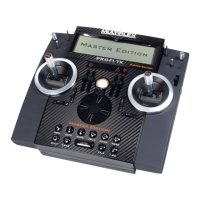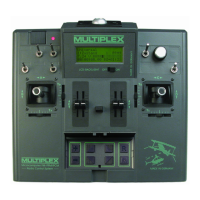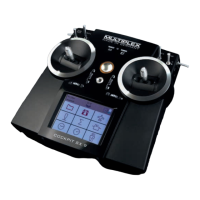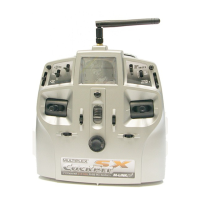Use cables with sufficient cross-section.
Do not coil up or shorten the receiver aerial. Do not lay the aerial on or close
to electrically conductive components. Deploy aerials outside of fuselages
with a shielding effect (carbon fibre, metallic painted finish).
Observe also the advice included in the relevant receiver operating instructions!
Ensure that the receiver power supply is of adequate capacity. For servos up
to about 40 Ncm torque you can estimate the required battery capacity using
the following formula:
Capacity [mAh] ≥ servo count x 200 mAh.
Use the next larger size of battery!
Take care to maintain sufficient distance between cables carrying heavy
currents (e.g. electric power system) and the RC system. Especially the
cables between brushless electric motors and their actuators must be kept
as short as possible (guide value: max. 10 to 15 cm).
Check the model regularly
Free movement and zero backlash of rudders and linkages.
Stability and flawless condition of rods, linkages, hinge joints, etc.
Carry out a visual check for fractures, cracks, possible shear points etc. on
the model itself, and in its components such as the RC and power systems.
Flawless condition and contact stability of cables and plug connections.
Absolutely essential: Examine the power supply and its wiring, including the
switch harness, and the external condition of the battery.
This entails regular maintenance of the battery and periodic checks of the
voltage curve and capacity, employing a charge process and battery charger
suitable for the type of battery in use.

